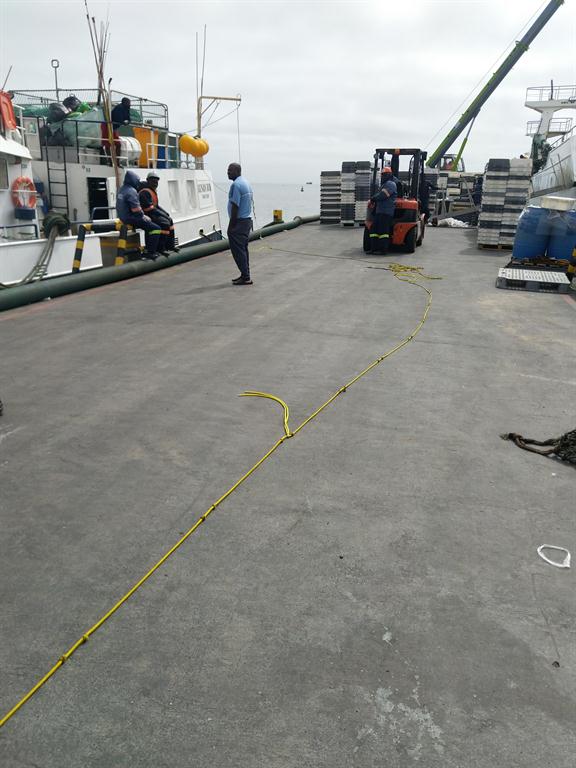Seabird bycatch regulations need updating
ELLANIE SMIT
WINDHOEK
The Namibian hake fisheries have reduced seabird bycatch substantially; however, regulations need to be updated to ensure international best practices.
Seabird bycatch is a serious challenge for the conservation and sustainability of fisheries. Namibia had some of the highest recorded mortality rates for seabird bycatch in the world, with some 30 000 birds estimated to be caught each year.
According to the Namibia Nature Foundation (NNF), Albatross Task Force (ATF) instructors are working with fisheries observers and fishers to ensure that the recently introduced regulations are upheld to maintain minimal levels of bycatch.
Recently, Titus Shaanika, the ATF senior instructor in Walvis Bay from the NNF, attended a dispute between a fisherman and a fisheries observer regarding seabird bycatch. The observer reported the mortality of at least seven seabirds.
According to the NNF, the particular longline vessel had a worn-out tori line (bird scaring line) that did not meet the government gazette specifications; specifications the captain was apparently not aware of.
Increased risk of bycatch
“Tori lines are essentially a series of streamers that flank the fishing line to deter seabirds until the hooks are at a safe depth. This vessel’s tori line lacked sufficient numbers of streamers, essential for the line to work effectively and stop seabirds going for hooks in the gaps.”
The NNF said the vessel also reportedly set most of its lines during the day, when seabirds are mostly actively foraging, which alongside the sub-standard tori line, substantially increases the risk of bycatch.
“Although night-setting is a best practice recommendation from the Agreement on the Conservation of Albatrosses and Petrels (ACAP), it is not included in the Namibian government regulations to reduce incidental seabird bycatch.”
Update regulations
“The Namibian hake fishery has come a long way in reducing seabird bycatch, but to ensure we are really minimising the risks, our regulations ought to be updated to reflect international best practice.
“Even good tori lines can fail sometimes, so it is important to have a back-up measure to protect seabirds, whether it is night-setting or heavier weights on the lines to sink them faster,” Shaanika said.
WINDHOEK
The Namibian hake fisheries have reduced seabird bycatch substantially; however, regulations need to be updated to ensure international best practices.
Seabird bycatch is a serious challenge for the conservation and sustainability of fisheries. Namibia had some of the highest recorded mortality rates for seabird bycatch in the world, with some 30 000 birds estimated to be caught each year.
According to the Namibia Nature Foundation (NNF), Albatross Task Force (ATF) instructors are working with fisheries observers and fishers to ensure that the recently introduced regulations are upheld to maintain minimal levels of bycatch.
Recently, Titus Shaanika, the ATF senior instructor in Walvis Bay from the NNF, attended a dispute between a fisherman and a fisheries observer regarding seabird bycatch. The observer reported the mortality of at least seven seabirds.
According to the NNF, the particular longline vessel had a worn-out tori line (bird scaring line) that did not meet the government gazette specifications; specifications the captain was apparently not aware of.
Increased risk of bycatch
“Tori lines are essentially a series of streamers that flank the fishing line to deter seabirds until the hooks are at a safe depth. This vessel’s tori line lacked sufficient numbers of streamers, essential for the line to work effectively and stop seabirds going for hooks in the gaps.”
The NNF said the vessel also reportedly set most of its lines during the day, when seabirds are mostly actively foraging, which alongside the sub-standard tori line, substantially increases the risk of bycatch.
“Although night-setting is a best practice recommendation from the Agreement on the Conservation of Albatrosses and Petrels (ACAP), it is not included in the Namibian government regulations to reduce incidental seabird bycatch.”
Update regulations
“The Namibian hake fishery has come a long way in reducing seabird bycatch, but to ensure we are really minimising the risks, our regulations ought to be updated to reflect international best practice.
“Even good tori lines can fail sometimes, so it is important to have a back-up measure to protect seabirds, whether it is night-setting or heavier weights on the lines to sink them faster,” Shaanika said.




Comments
Namibian Sun
No comments have been left on this article